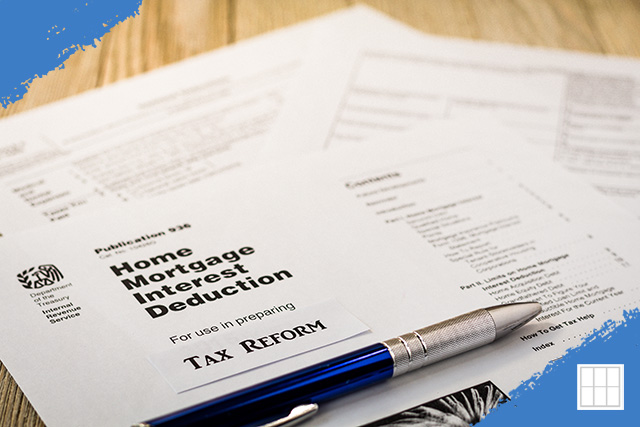Private Mortgage insurance, also known as PMI, is a type of insurance that protect lenders…

Debt-to-Income Ratio (DTI): How Is It Calculated?
When considering buying a home, you must get familiar with your debt-to-income ratio (DTI). Moving forward with a high DTI compared to your income could be risky. Even if you’re prepared to buy a home, you may struggle to find a lender willing to work with a high DTI.
Use this guide to understand DTI to evaluate your financial readiness to purchase a home – so that you are ready to apply for a mortgage.
What Is Debt-To-Income Ratio?
Your debt-to-income ratio, or DTI, tells the lenders the percentage of monthly debt in relation to your income. To calculate your DTI, add your minimum monthly debt payments and divide it by your gross or pre-tax income.
When you qualify for a mortgage, you’ll need to meet the maximum DTI requirements of the loan program you are applying. Lenders want to ensure you are not taking on more debt than you can handle. A lower DTI indicates less risk to the lender that you’ll default on the loan.
The are two ratios that a lender uses for qualification, a housing ratio (front-end ratio) and a debt-to-income ratio (back-end ratio):
Housing Ratio: Front End Ratio
The housing ratio only includes housing-related expenses, such as the subject property’s monthly mortgage payment, property taxes and insurance, and any applicable PMI or homeowners association dues. The total monthly housing payment divided by your monthly pre-tax income equates to your housing ratio.
Debt to Income Ratio (DTI): Back End Ratio
Your DTI is the housing-related expenses plus your minimum monthly debts divided by your pre-tax income. Your monthly obligations consist of accounts listed on your credit report; this includes credit card debt, student loans, car loans, and personal finance loans. Lender focus on the DTI because it represents the best picture of your qualification.
See how much you qualify for with Metropolitan Mortgage.
How To Calculate Debt-To-Income Ratio
To calculate your DTI, add the total housing costs with all your total monthly debt payments, then divide them by your total gross household income. Here are some examples:
1. Total Your Minimum Monthly Payments
Take the total of minimum monthly payments – not the account balance or the amount you typically pay. Here are examples of debts included in your debt to income DTI ratio:
- Total housing expense for the subject property
- Total housing expense for a retained property
- Auto loan payments
- Student loan payments
- Child support or alimony payments
- Credit card payments
- Personal loan payments
Here are examples of debts excluded from DTI calculation:
- Utility costs
- Health insurance premiums
- Transportation costs
- Savings account contributions
- 401(k) or IRA contributions
- Entertainment, food, and clothing costs
2. Divide Your Monthly Debts By Your Gross Monthly Income
Divide the total debts by your gross (pre-tax) monthly income. Should additional borrowers apply, you include their income and monthly debts into this calculation. You will need to multiply the result by 100 to see the DTI.
For example, if your household income is $5,000, and your total monthly debts are $2,000, divide $2,000 by $5,000, which equals .4. Then multiple .4 by 100 equals a 40% debt-to-income ratio.
What Is A Good Debt-To-Income Ratio on A Mortgage?
Each loan program has a maximum DTI; here is a list of acceptable DTI ratio calculated based on the type of loan:
FHA Loans
FHA loans (Federal Housing Administration) are more lenient in their DTI requirements. For example, the maximum DTI for FHA loans is 57%, based on a case-by-case basis.
VA Loans
VA loans are insured by the Department of Veterans Affairs and often have more lenient DTI requirements. In most cases, you can get a VA loan with a DTI up to 60%.
Conventional Loans
Conventional loans DTI requirements depend on your situation and the type of Conventional loan you are applying. Generally, you will need a DTI of 45% or 50% for well-qualified borrowers.
USDA Loans
USDA loans can buy or refinance a home in eligible rural areas. The maximum DTI to qualify for USDA is less than 41%. USDA has unique income requirements and is designed for low- to median-income households.
How Can I Lower My Debt-To-Income Ratio?
If your DTI is above the maximum allowed, there are some strategies you can employ before you apply for a mortgage.
Pay Off Your Smallest Debts with Highest Monthly Payments
The fastest way to improve your debt-to-income ratio is to reduce your monthly payments. Pay off your smallest outstanding debt with the highest monthly payments first. You would want to wait 30 to 60 days for your credit score to reflect these changes. Please note that you would need to improve your credit utilization ratio if you are looking to improve your credit score.
Put Another Person On The Loan
If you’re buying a home with another person, your mortgage lender will calculate your DTI using both incomes and debts. However, if the additional borrower’s DTI is higher than yours, adding them to the loan may not improve your financial health.
If that case, you’re buying a house on your own with a high DTI, you can always ask a family member to co-sign the loan with you. Lenders will factor in a co-signer into DTI, potentially helping you qualify for a larger mortgage or a lower interest rate.
Have a Low DTI and Are Ready to Apply For a Loan in Kansas or Missouri?
Since 1997, Metropolitan Mortgage has been helping countless buyers secure the mortgage products they need to help finance such a large purchase. With various mortgage programs offered, we are the number one mortgage resource for borrowers in Missouri, and the rest of the Midwest region, including Kansas and Missouri. We have been a family-run business since 1997 and work hard to help borrowers realize their dreams of buying a home. Contact us today if you have questions about applying for a mortgage.



